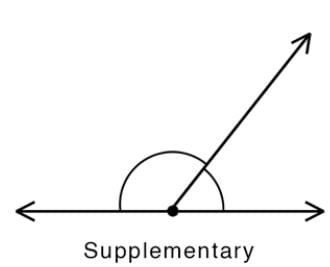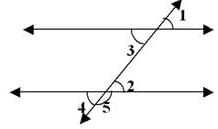Test: Lines and Angles - JSS 2 MCQ
15 Questions MCQ Test - Test: Lines and Angles
If two lines intersect at a point, then the vertically opposite angles are always ________
A line that intersects two or more lines at distinct points is called
If two adjacent angles are supplementary, then they form _________ .
If two angles are supplementary then the sum of their measures is __________.
If two angles are complementary, then the sum of their measures is __________.
If ∠S and 100° form a linear pair. What is the measure of ∠S
Find the measure of an angle, if 7 times its complement is 10 less than 3 times its supplement
The angle which makes a linear pair with an angle of 61o is of
If two lines are intersected by a transversal such that any pair of corresponding angles are equal then the lines are
A and B are vertically opposite angles. If the measure of A is 60o, what is the value of B?






















